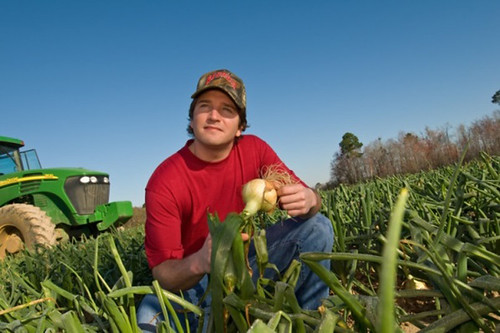
Success is often achieved when you have access to a number of tools and know how and when to use them. The USDA’s Agricultural Marketing Service (AMS) is equipping produce businesses with the proper tools for success through our Marketing Order and Agreement Division (MOAD). As discussed before, this division administers fruit and vegetable marketing orders and agreements designed to support the industry’s financial and commercial success with the help of tools such as funding production and market research.
As self-help programs requested for and completely funded by the industry, marketing orders and agreements can address issues ranging from combating invasive species to identifying key product attributes based on consumer preferences. Our MOAD employees oversee industry boards and committees as they partner with local universities and organizations to overcome these types of challenges.
One example is the California Desert Grape Administrative Committee’s five-year canker study conducted by Dr. Carmen Gispert, a viticulture and pest management advisor with the University of California. The study aims to identify the causal agents of destructive canker diseases in U.S. grape production and develop adaptive management strategies to prevent them from occurring. Several fungi cause canker diseases in all types of grape production (wine, table, raisin, and juice). The opportunistic fungi enter grapevines through wounds caused by pruning. Once a grapevine is infected, there is no cure. Applying a fungicide directly to wound surfaces is the only management strategy that will prevent the canker from infecting the vines.
Research findings so far indicate pathogens can live on dead vines and become active when wet from sprinklers, rain, or spraying. They also suggest the incidence of canker disease in Coachella Valley vineyards has become more frequent since the installation and use of overhead sprinklers began nearly 10 years ago. Research suggests overhead spraying opens up the spores and spreads the canker. As a result of the research, improved cultural practices have been adopted. This includes shredding and burying infected dead wood, a practice that decreases inoculation by removing the dead wood each year.
The Vidalia Onion Committee reached into the federal marketing order tool box to better understand quality preferences among consumers and to fight multiple onion diseases such as black mold, downy mildew, and onion center rot. Some of their research projects include developing a taste panel to identify desired flavor attributes when consumers eat different Vidalia™ onion varieties. Vidalia Onion Committee Chairman Jason Herndon summarizes the committee’s research efforts as the following:
Our focus on research over the past 5 years has increased significantly. We saw that consumers wanted us to get back to what we call a traditional Vidalia. Instead of just going back to what we did 20 years ago, the committee decided to ensure that the onion we market is of the highest eating quality. We also wanted to make sure that we used cutting-edge science to battle the numerous issues that today’s growers are facing on the farm. We also faced two major outbreaks (black mold and downy mildew). Through our research, I believe we all have implemented new farming practices to limit our exposure to these potentially devastating diseases.
The California Desert Grape Administrative Committee and the Vidalia Onion Committee are just two examples of how USDA’s marketing orders and agreements help fruit, vegetable and specialty crop producers organize to collectively identify and fund needed industry research. Twenty-four of 28 federal marketing orders currently conduct research benefiting their industry. Research initiatives are just one of many capabilities available for producers via federal marketing orders. For more information, check out the Marketing Order and Agreement Division’s website.

